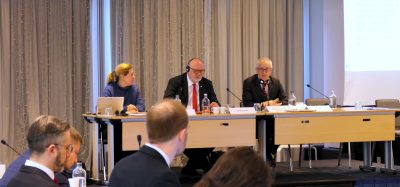Foreword: Developing the vision and strategy for Europe’s future rail system
Posted: 11 April 2014 | | No comments yet
The rail sector’s vision is that railways, already vital to Europe’s social and economic well-being, will contribute even more in the future; an efficient rail system that is the backbone for the growth and competiveness of the European economy. Europe’s rail companies and stakeholders have collaborated to develop and publish the vision of the future European rail system. The Rail Operating Community (ROC) has taken this one step further and come together to set out a technical strategy to enable the vision to become reality.
Publication of a ‘vision document’ is already a significant step taken by the rail sector; the key now is to make it happen.
Challenge 20501 was published in February 2013 and was endorsed by the Presidents of all of the principal rail sector associations and representative associations of rail’s main customers. It examines how the principle challenges and opportunities such as capacity, consistency, connectivity, competitiveness, carbon, and cost etc. should be addressed and identifies some specific objectives to comple – ment the vision.
The future railway in Europe will have an absolute focus on the customer. The vision describes how rail will be increasingly adaptable, flexible, resilient and quick to respond to customer requirements and to make rail the first transportation choice for the passenger and the shipper. The European rail system will deliver great value for money and be seen as highly attractive – the way to travel.
Rail has long been a ‘green’ transport mode and will take great trouble to ensure that it remains so; but that in itself is not enough. The vision sets out some objectives for the sector and the subsequent technical strategy establishes a series of enablers that will build on the sector’s capacity for moving large volumes of people and goods quickly and efficiently. All of this will be done safely and with low levels of social and environmental impact, taking advantage of new technology to improve further our credentials in areas such as noise, emissions and visual intrusion. Rail will continue to be a good neighbour, a friend of the community and enjoy a favourable reputation not only with our customers but across society.
Today, despite a number of high profile successes, there is a disappointingly evident air of negativity towards railways – it has to be admitted that it is a complex sector, especially when it comes to implementing change – but there are signs that, despite the significant heritage and the role that rail has played in the history of Europe, the patience with the rail sector of a number of high level players is being tested.
There is a need for a well-directed and strategically developed plan of high profile projects to reverse this perspective and bring about an evolution. To this end, and recognising the importance of their role in developing the European sector of the future, the ROC published the Rail Technical Strategy, Europe (RTSE) in February 2014.
It is clear to the ROC that the best opportunity must be made of the present-day structure of the railway sector. It is through closer collaboration between all the major rail stakeholders that the objective of developing the future European railway as a system will be most efficiently achieved. Working together will also ensure that capacity to match demand is maintained. Congestion on Europe’s roads is a growing problem and rail is best placed to help alleviate that. However, as the European economy grows, so will the demand for rail which will need to be faster, more frequent and more attractive.
The key enablers in the RTSE that will help us to meet this logistical challenge are based on the core components of the rail system: control, command and communication; infrastructure; passenger and freight rolling stock; energy supply and consumption; railway people; information management; security and safety.
Within these are a number of important innovative elements such as maximising technological advances in automation to improve capacity and energy optimisation opportunities; convoying of trains to bring about a real step-change in capacity management; and self-diagnosis and rectification of rolling stock and trackside equipment, thus minimising service disruption and permitting the availability of the infrastructure on a ‘forever-open railway’ concept.
For this level of innovation to be achieved, change will be inevitable. The UIC has a strong role to play in supporting its members, the ROC and the wider rail sector and to inspire the next generation of railway development.
We have a vision and a strategy to achieve this – the challenge is to ensure that everyone in Europe’s railways can collaborate to deliver the target system.
Reference
- Challenge 2050 and the RTSE can be freely downloaded from uic.org
Biography
Simon Fletcher is a Member of the Board of Directors at the UIC and is responsible for the European region. He was a member of the editorial team which drafted Challenge 2050 and also led the team that developed the Rail Technical Strategy Europe.






